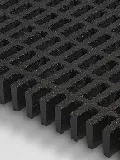loading...
- No. 9, Xingyuan South Street, Dongwaihuan Road, Zaoqiang County, Hengshui, Hebei, China
- admin@zjcomposites.com
- +86 15097380338
- Welcome to visit our website!
frp railing
Exploring FRP Railing A Comprehensive Guide
In contemporary architectural design and construction, the choice of materials is paramount for ensuring safety, durability, and aesthetic appeal. Among various construction materials, Fiber Reinforced Polymer (FRP) has emerged as a game-changer, particularly in the creation of railings. FRP railings are increasingly popular in both residential and commercial applications due to their numerous benefits. This article explores the advantages of FRP railings, their applications, and why they are a sustainable choice for modern projects.
Understanding FRP
Fiber Reinforced Polymer (FRP) is a composite material made from a polymer matrix reinforced with fibers, typically glass, carbon, or aramid. This combination results in a lightweight yet exceptionally strong material with impressive resistance to corrosion and weathering. FRP is renowned for its versatility, making it suitable for various structural and non-structural applications, one of the most notable being railings.
Advantages of FRP Railings
1. Durability One of the standout features of FRP railings is their durability. Unlike traditional materials such as wood or metal, FRP does not rust, rot, or corrode, making it ideal for harsh environments. This characteristic prolongs the lifespan of the railings, ultimately reducing maintenance costs and the need for replacements.
2. Low Weight FRP is significantly lighter than metals such as steel or aluminum. This lightweight nature facilitates easier transportation, installation, and handling, significantly reducing labor costs. Moreover, the reduced weight puts less strain on supporting structures, making it an excellent choice for many applications.
3. Customization FRP railings can be easily molded into various shapes and sizes, allowing for a high degree of customization. Whether a designer envisions a sleek, modern look or a traditional aesthetic, FRP can be tailored to meet those specifications. Additionally, FRP can be manufactured in different colors and finishes, providing further design flexibility.
4. Non-Conductive One of the unsung benefits of FRP is its non-conductive nature. This property makes FRP railings a safe choice in areas where electrical exposure is a concern, such as in industrial settings or near power lines.
frp railing

5. Environmental Resistance FRP railings excel in environments that are prone to chemical exposure and extreme weather conditions. Whether in coastal locations prone to salty air or industrial sites where corrosive substances are present, FRP's resistance to degradation ensures the longevity and reliability of the railings.
Applications of FRP Railings
FRP railings find applications across various sectors, including
- Residential Properties Many homeowners turn to FRP railings for their decks, balconies, and staircases due to the material's aesthetic appeal and protective qualities. - Commercial Buildings In shopping malls, office buildings, and other commercial environments, FRP railings provide safety without compromising design. Their resistance to wear and tear makes them suitable for high-traffic areas.
- Industrial Settings FRP railings are particularly beneficial in factories and processing plants where they may be exposed to harsh chemicals. Their non-corrosive nature ensures that safety barriers remain intact, which is essential for worker safety.
- Infrastructure Public spaces such as bridges, walkways, and parks utilize FRP railings for their strength and ability to withstand environmental challenges. They contribute to the overall safety of these infrastructures while offering a contemporary look.
Conclusion
In summary, FRP railings represent a significant advancement in construction materials, offering a combination of strength, durability, and aesthetic flexibility. As more architects and builders recognize the benefits of using FRP, its prevalence in various applications is bound to increase. The material's resistance to environmental factors, coupled with its lightweight nature, makes it an ideal choice for safety railings in an array of settings—from residential homes to industrial facilities.
Embracing FRP railings is not just about choosing a material; it's about investing in the future of sustainable building practices, ensuring safety while also adhering to the evolving demands of modern design. Whether you are planning a new construction project or considering renovations, incorporating FRP railings could very well be the choice that elevates both function and form.
-
The Benefits and Uses of Covered Grating SolutionsNewsMay.12,2025
-
SMC Panel Tanks: The Best Choice for Modern Water StorageNewsMay.12,2025
-
Sectional Water Tanks for Every NeedNewsMay.12,2025
-
FRP Profiles: A Strong Solution for Modern ApplicationsNewsMay.12,2025
-
FRP Pressure Tanks and VesselsNewsMay.12,2025
-
All You Need to Know About FRP Grating SolutionsNewsMay.12,2025
-
Why FRP Grating Panels are the Best Choice for Your Industrial NeedsNewsMay.09,2025
